Parallax View
Literary rating: ★★★
Kick-butt quotient: ☆☆☆½
 This largely unfolds over the period of about a week in May-June 1987. History buffs will recall that being the time when the Soviet Union was beginning to fall apart, and it’s that which provides the background to the novel. President of the USSR, Mikhail Gorbachev is trying to shepherd his country into a more open era, but is facing strong opposition from some elements within the government. He writes a letter to his American counterpart, Ronald Reagan, whose contents are potentially explosive, and which the anti-Gorbachev faction in the Kremlin will do anything to stop. They fail to stop the communication being handed to American courier and CIA agent Tracie Tanner in East Berlin, but that’s only the start of their efforts to prevent Tracie completing her mission.
This largely unfolds over the period of about a week in May-June 1987. History buffs will recall that being the time when the Soviet Union was beginning to fall apart, and it’s that which provides the background to the novel. President of the USSR, Mikhail Gorbachev is trying to shepherd his country into a more open era, but is facing strong opposition from some elements within the government. He writes a letter to his American counterpart, Ronald Reagan, whose contents are potentially explosive, and which the anti-Gorbachev faction in the Kremlin will do anything to stop. They fail to stop the communication being handed to American courier and CIA agent Tracie Tanner in East Berlin, but that’s only the start of their efforts to prevent Tracie completing her mission.
This is the kind of book I liked despite its flaws – and there are quite a few of those. The plot really wouldn’t stand up to scrutiny: it’s the old “She can’t trust anyone” trope, and it’d take about five minutes of thought by a trained intelligence operative to figure out how she could bypass that. Meanwhile, Tracie has no qualms putting her complete faith in the male lead, hunky (but thoroughly doomed – he just found out he has an inoperable brain tumour) air-traffic controller Shane Rowley. No surprises for guessing where those two end up. Despite the period setting, there’s not much sense of that very specific era, and Leverone does spend too much time diverting into background information on characters who, in truth, are not more than fringe players. Finally, while it’s clear who the “bad guys” are, it might have helped if there had been a particular antagonist, rather than a series of relatively faceless Russian agents and American traitors.
However, you shouldn’t necessarily let any of the above dissuade you, since they are largely the kind of criticisms I only realized after I’d finished the book, and was contemplating this review. The author does a fine job of managing the pace, keeping things moving at a fast and furious rate. There’s one hurdle after another for Tracie and Shane to overcome, as they hurtle towards the final confrontation, atop a building in Washington. There are even occasional moments where I was genuinely impressed by Tracie’s smarts, such as her taking two motel rooms on opposite sides. Leverone has a very good eye for action, and some of the set pieces are positively cinematic, such as the fight on board a B-52, and its subsequent marginally controlled descent. Could quibble about the way Tracie needs “rescued” at the end, except it’s foreshadowed well enough to make sense.
All Enemies
Literary rating: ★★★½
Kick-butt quotient: ☆☆☆
 After finishing Volume 1, I was pleased to discover I’d been smart enough to pick up Volumes 1-3 as a freebie (you can also get the first seven books for ten bucks). Having been solidly entertained by the first book, I headed more or less straight in to the next two, figuring that it would be a good candidate for our first ever featured book review. I wasn’t disappointed. This is another slick page-turner, albeit one with some of the same issues as its predecessor.
After finishing Volume 1, I was pleased to discover I’d been smart enough to pick up Volumes 1-3 as a freebie (you can also get the first seven books for ten bucks). Having been solidly entertained by the first book, I headed more or less straight in to the next two, figuring that it would be a good candidate for our first ever featured book review. I wasn’t disappointed. This is another slick page-turner, albeit one with some of the same issues as its predecessor.
It begins only a couple of days after the events which ended the first volume. Traci is already back out in the field, even though she is still healing – both physically and mentally – from the damage she suffered while completing her mission.Only the personal intervention of President Reagan saved her from being drummed out of the CIA by Director Aaron Stallings, but it’s clear she is not exactly his flavour of the month.
A couple of months later, in September 1987, things kick off properly with the abduction of US Secretary of State J. Robert Humphries from his home in Georgetown. He’s a close personal friend of the President, who orders Stallings carry out an off-the-books operation, using a lone operative, to find out what happened and who’s responsible. No prizes for guessing to whom the director gives this fraught mission The initial evidence all seems to point to it being a Russian plot, this being the peak of the Cold War, but the more Tracie looks into the matter, the more it seems the Russians are being set up to take the fall, and the real culprits are elsewhere. Trying to tell Stallings this only gets her fired from the CIA; naturally, this is barely an inconvenience for the heroine.
As in the first book, the circumstances do throw Tracie back onto relying almost exclusively on her own talents. While she does get some help from CIA Analyst Marshall Fulton, it’s mostly information, which helps her put the pieces together. He’s a desk jockey, and although brave enough, ends up literally dropped off by the side of the road, as Tracie speeds off on her rescue mission. There is a slight sense of romantic tension between them; it doesn’t amount to much, yet still feels a bit awkward, considering how close we are to the personal tragedy Tracie endured in book #1. Her stoic refusal to call for back-up also felt a little strained. I get she no longer had official standing, yet there’s a point where this seemed a tad contrived.
It is a bit more of a stealth mission, which is what leads to the slightly lower kick-butt quotient for this: there’s more creeping around, trying not to be detected, in place of plane crashes, gun battles and chases. However, it feels more coherent and has a better ring of plausibility to it. Each piece of the story connects well to the next, and does a good job of drawing the reader along, towards the eventual climax on an small island off the East coast. My reading is usually split, with one book on my phone and a different one on the tablet. So it likely says something that, as soon as I finished this, I loaded up volume three on both my devices, the better to get into it.
The Omega Connection
Literary rating: ★★★
Kick-butt quotient: ☆☆☆☆
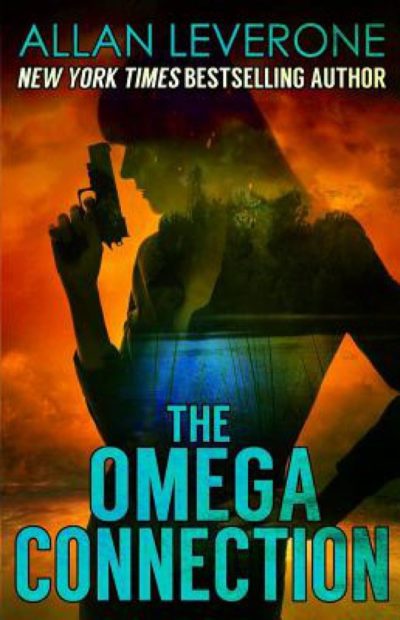 Again, there’s no much of a pause between the end of one story and the beginning of the next. No matter how much Tracie may have been taxed by her exploits, she’s thrown back out there by boss Stallings, on another hazardous mission. I do wonder about her motivation, since she’s now entirely off-books, no longer even being a CIA employee: why love your country so much, and be prepared to put your life on the line for it, when its agencies treat you in such a disrespectful manner? I’d be high-tailing it towards the private security sector after all she’s gone through. That might just be me though.
Again, there’s no much of a pause between the end of one story and the beginning of the next. No matter how much Tracie may have been taxed by her exploits, she’s thrown back out there by boss Stallings, on another hazardous mission. I do wonder about her motivation, since she’s now entirely off-books, no longer even being a CIA employee: why love your country so much, and be prepared to put your life on the line for it, when its agencies treat you in such a disrespectful manner? I’d be high-tailing it towards the private security sector after all she’s gone through. That might just be me though.
This begins with an electronics company being decimated by a bomb attack, with its CEO also murdered in his hotel room. Threatening letters had been received, blaming the corporation for its role in the Bay of Pigs fiasco over a quarter of a century previously, an abortive invasion attempt against Fidel Castro’s Cuba, which cost the lives of many Cuban expats. Now, it appears, someone is out for payback. Tracey is assigned, first to bring in the only surviving member of the board, its R&D genius, Edison Kiley, then find out the person or persons responsible and make them stop. The task will take her into the darker corners of the expat community in Miami, over into Cuba itself, before she has to go deep into the almost unexplored territory of the Florida Everglades.
There is a certain sense of deja vu, in that as in All Enemies, the culprit for whom Tracie is seeking, is not who it initially appears. Neither book makes much effort to hide this fact: they’re not really whodunnits. However, it is a little too familiar for my tastes, and she also accepts what she is told regarding this by a certain party as the truth. While she is limited in what she can do, due to her unofficial status, I’d still expect her to be a little more “Trust, but verify…”
The best thing here is likely the main antagonist. They spend most of the film in the background, with Tracie dealing mostly with the results of their action. However, the eventual face-off is worth the wait, a downright brutal and savage brawl in the depths of the Florida swamps. It’s good enough to make me wish they’d met up earlier in the story, and had more than one such encounter. By the end, I’d be hard-pushed to say Tracie had shown much character development. She’s more or less in the same place she was at the start of volume 3 – just with a bullet wound in her leg, and a nasty concussion. However, the whole trilogy proved to be more than an adequately fun read, and I would not bet against further volumes showing up here, down the road.
Author: Allan Leverone
Publisher: Rock Bottom Books, available through Amazon, both as a paperback and an e-book
Books 1-3 of 9 in the Tracie Tanner Thrillers series.
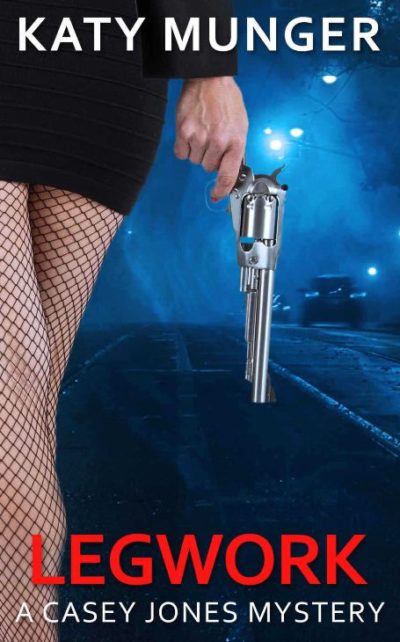 While omnibus editions of series are often a good way to pick up a large volume of content for a discounted price, they do have their downside. Especially for someone like me, who is basically bloody-minded and regards the dreaded Did Not Finish as a badge of failure. So even when a book is not that entertaining, I still find myself slogging on: and when there are three volumes in one, its a process which naturally takes that much longer. I think if I’d had just the one story here, I’d perhaps have looked upon this with a kinder eye. Three was tough, not least because the final story was the longest, occupying a solid forty percent of the set, and is also the least entertaining of the trilogy.
While omnibus editions of series are often a good way to pick up a large volume of content for a discounted price, they do have their downside. Especially for someone like me, who is basically bloody-minded and regards the dreaded Did Not Finish as a badge of failure. So even when a book is not that entertaining, I still find myself slogging on: and when there are three volumes in one, its a process which naturally takes that much longer. I think if I’d had just the one story here, I’d perhaps have looked upon this with a kinder eye. Three was tough, not least because the final story was the longest, occupying a solid forty percent of the set, and is also the least entertaining of the trilogy.




 This seems to come from a subset of a whole slew of Paranormal Police Department series in which Logsdon is involved with various authors, e.g. NYPPD. I don’t believe you need to have read those, although I did feel a bit dumped in at the deep end here. Evangeline is a resident of a demonic realm and member of House Sinister, a group who are all but wiped out in a surprise attack. Key words: “all but”. The job needs to be finished, but before that can happen, Evangeline flees to the human world – Los Angeles in particular – taking over the body of a rich socialite who conveniently just died in a car crash, so is ripe for possession.
This seems to come from a subset of a whole slew of Paranormal Police Department series in which Logsdon is involved with various authors, e.g. NYPPD. I don’t believe you need to have read those, although I did feel a bit dumped in at the deep end here. Evangeline is a resident of a demonic realm and member of House Sinister, a group who are all but wiped out in a surprise attack. Key words: “all but”. The job needs to be finished, but before that can happen, Evangeline flees to the human world – Los Angeles in particular – taking over the body of a rich socialite who conveniently just died in a car crash, so is ripe for possession.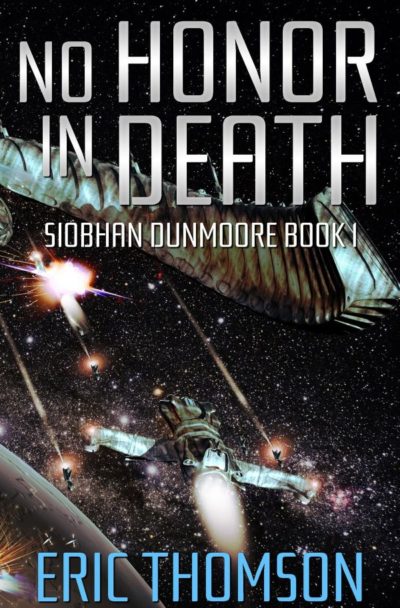 This SF novel takes place in the future where the human Commonwealth is engaged in a brutal space war against the militaristic Shrehari Empire – imagine Klingons on krack, perhaps. They have superior technology, but humanity’s ability to think outside the box and improvise has helped level the playing field. Siobhan Dunmoore has just survived – emphasis on “just” – a battle against the Imperial cruiser Tol Vakash of Captain Brakal, forcing him to retreat by attempting a kamikaze crash of her badly-damaged craft into his. As a “reward”, she is assigned command of the Stingray, a craft with a bad reputation. Its previous captain is now facing a Disciplinary Board, and the crew are barely even trying. It seems Dunmoore has been set up to fail, and she’ll need to overcome resistance from enemies both domestic and alien, as well as overt and covert, before she can even think about going another round with Captain Brakal.
This SF novel takes place in the future where the human Commonwealth is engaged in a brutal space war against the militaristic Shrehari Empire – imagine Klingons on krack, perhaps. They have superior technology, but humanity’s ability to think outside the box and improvise has helped level the playing field. Siobhan Dunmoore has just survived – emphasis on “just” – a battle against the Imperial cruiser Tol Vakash of Captain Brakal, forcing him to retreat by attempting a kamikaze crash of her badly-damaged craft into his. As a “reward”, she is assigned command of the Stingray, a craft with a bad reputation. Its previous captain is now facing a Disciplinary Board, and the crew are barely even trying. It seems Dunmoore has been set up to fail, and she’ll need to overcome resistance from enemies both domestic and alien, as well as overt and covert, before she can even think about going another round with Captain Brakal. I am, probably, biased here. Scottish action heroines are pretty rare, to the point I am hard pushed to think of a single one I’ve covered previously, in the twenty years I’ve been running this domain. [I just made myself feel
I am, probably, biased here. Scottish action heroines are pretty rare, to the point I am hard pushed to think of a single one I’ve covered previously, in the twenty years I’ve been running this domain. [I just made myself feel 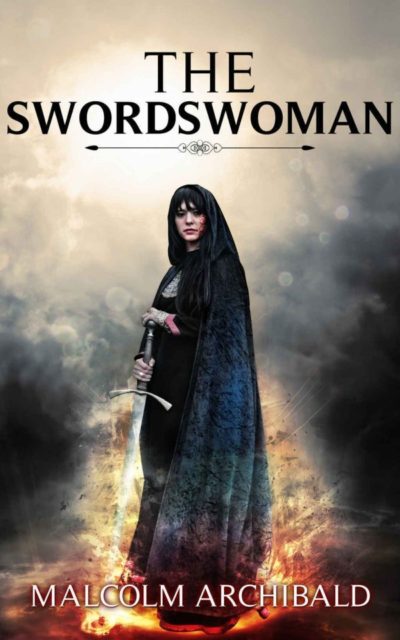 That peace is shattered when someone is washed up on the Western Isles island of Dachaigh where 20-year-old Melcorka lives with her mother. It turns out the Norse are invading, and the king must be notified of the threat. Melcorka and the rest of her clan head towards the capital, only to arrive too late: the army of Alba (as Scotland was then called) has been routed and the nobles scattered. However, Melcorka has a destiny to fulfill… And also inherits a large sword, Defender, with a history dating back centuries, whose powers transform her into the titular character. It’s up to her to rally forces, including the ferocious Picts from the North, to take on the invaders, and send them back across the North Sea to Scandinavia.
That peace is shattered when someone is washed up on the Western Isles island of Dachaigh where 20-year-old Melcorka lives with her mother. It turns out the Norse are invading, and the king must be notified of the threat. Melcorka and the rest of her clan head towards the capital, only to arrive too late: the army of Alba (as Scotland was then called) has been routed and the nobles scattered. However, Melcorka has a destiny to fulfill… And also inherits a large sword, Defender, with a history dating back centuries, whose powers transform her into the titular character. It’s up to her to rally forces, including the ferocious Picts from the North, to take on the invaders, and send them back across the North Sea to Scandinavia. This largely unfolds over the period of about a week in May-June 1987. History buffs will recall that being the time when the Soviet Union was beginning to fall apart, and it’s that which provides the background to the novel. President of the USSR, Mikhail Gorbachev is trying to shepherd his country into a more open era, but is facing strong opposition from some elements within the government. He writes a letter to his American counterpart, Ronald Reagan, whose contents are potentially explosive, and which the anti-Gorbachev faction in the Kremlin will do anything to stop. They fail to stop the communication being handed to American courier and CIA agent Tracie Tanner in East Berlin, but that’s only the start of their efforts to prevent Tracie completing her mission.
This largely unfolds over the period of about a week in May-June 1987. History buffs will recall that being the time when the Soviet Union was beginning to fall apart, and it’s that which provides the background to the novel. President of the USSR, Mikhail Gorbachev is trying to shepherd his country into a more open era, but is facing strong opposition from some elements within the government. He writes a letter to his American counterpart, Ronald Reagan, whose contents are potentially explosive, and which the anti-Gorbachev faction in the Kremlin will do anything to stop. They fail to stop the communication being handed to American courier and CIA agent Tracie Tanner in East Berlin, but that’s only the start of their efforts to prevent Tracie completing her mission. After finishing Volume 1, I was pleased to discover I’d been smart enough to pick up Volumes 1-3 as a freebie (you can also get the first seven books
After finishing Volume 1, I was pleased to discover I’d been smart enough to pick up Volumes 1-3 as a freebie (you can also get the first seven books  Again, there’s no much of a pause between the end of one story and the beginning of the next. No matter how much Tracie may have been taxed by her exploits, she’s thrown back out there by boss Stallings, on another hazardous mission. I do wonder about her motivation, since she’s now entirely off-books, no longer even being a CIA employee: why love your country so much, and be prepared to put your life on the line for it, when its agencies treat you in such a disrespectful manner? I’d be high-tailing it towards the private security sector after all she’s gone through. That might just be me though.
Again, there’s no much of a pause between the end of one story and the beginning of the next. No matter how much Tracie may have been taxed by her exploits, she’s thrown back out there by boss Stallings, on another hazardous mission. I do wonder about her motivation, since she’s now entirely off-books, no longer even being a CIA employee: why love your country so much, and be prepared to put your life on the line for it, when its agencies treat you in such a disrespectful manner? I’d be high-tailing it towards the private security sector after all she’s gone through. That might just be me though.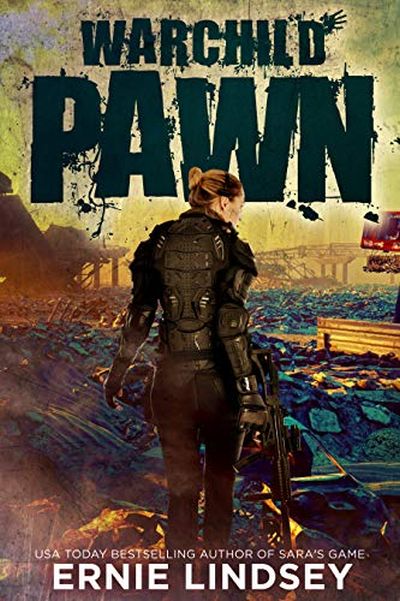 This dystopian future takes place after the United States of America is no longer united, having fragmented into a group of disparate regions that exist in an uneasy piece with each other. The heroine is 14-year-old Caroline, who lives in a remote part of the Appalachians, her town loosely affiliated to the People’s Republic of Virginia. She’s a scout, and one day encounters forces from the Democratic Alliance. The population of her village who escape, head towards the state capital of Warrenville, pursued by the invading army. On the way, Caroline begins to come into startling abilities which were literally injected into her as a small child.
This dystopian future takes place after the United States of America is no longer united, having fragmented into a group of disparate regions that exist in an uneasy piece with each other. The heroine is 14-year-old Caroline, who lives in a remote part of the Appalachians, her town loosely affiliated to the People’s Republic of Virginia. She’s a scout, and one day encounters forces from the Democratic Alliance. The population of her village who escape, head towards the state capital of Warrenville, pursued by the invading army. On the way, Caroline begins to come into startling abilities which were literally injected into her as a small child.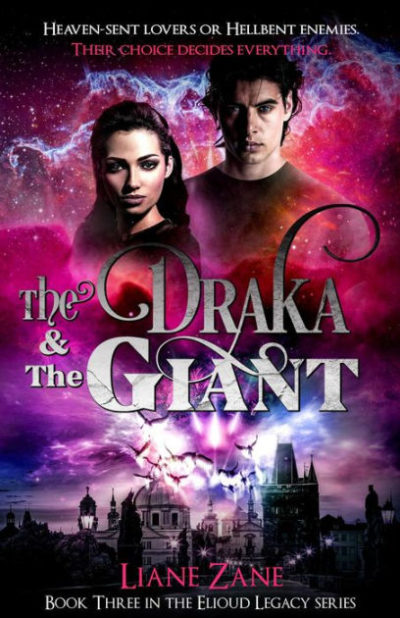 For me, in the previous books, these two characters had always seemed the least interesting and appealing, largely because I didn’t really know them. Indeed, Beta (short for Alzbeta –she’s Czech) is hard to get to know. She’s a “lone wolf” with very few friends, and a brusque manner that can come across as practically feral. And because Andras is big, strong and taciturn, and mostly inclined to obey orders, it’s easy to fall into the trap of subconsciously dismissing him as not very smart or sensitive (though that’s a great mistake!). But here they come into their own; we see them as the complex and special people they truly are. The previous book ended with Beta arousing a sleeping, half groggy Andras for an unexpected sexual encounter in his bed –and then vanishing before morning. When this book opens, none of the other five main characters have seen her for three years (so it’s now 2018). But we soon learn that there’s been more of a reason for her disappearance than her commitment issues. Much is going on, and Asmodeus (and his fellow demon Yeqon. whom we met in the second book) are exponentially ratcheting up their plans, which won’t bode well for humanity if they come to fruition. But the Archangel Michael (directed, of course, by God, though here He operates offstage) has plans too….
For me, in the previous books, these two characters had always seemed the least interesting and appealing, largely because I didn’t really know them. Indeed, Beta (short for Alzbeta –she’s Czech) is hard to get to know. She’s a “lone wolf” with very few friends, and a brusque manner that can come across as practically feral. And because Andras is big, strong and taciturn, and mostly inclined to obey orders, it’s easy to fall into the trap of subconsciously dismissing him as not very smart or sensitive (though that’s a great mistake!). But here they come into their own; we see them as the complex and special people they truly are. The previous book ended with Beta arousing a sleeping, half groggy Andras for an unexpected sexual encounter in his bed –and then vanishing before morning. When this book opens, none of the other five main characters have seen her for three years (so it’s now 2018). But we soon learn that there’s been more of a reason for her disappearance than her commitment issues. Much is going on, and Asmodeus (and his fellow demon Yeqon. whom we met in the second book) are exponentially ratcheting up their plans, which won’t bode well for humanity if they come to fruition. But the Archangel Michael (directed, of course, by God, though here He operates offstage) has plans too….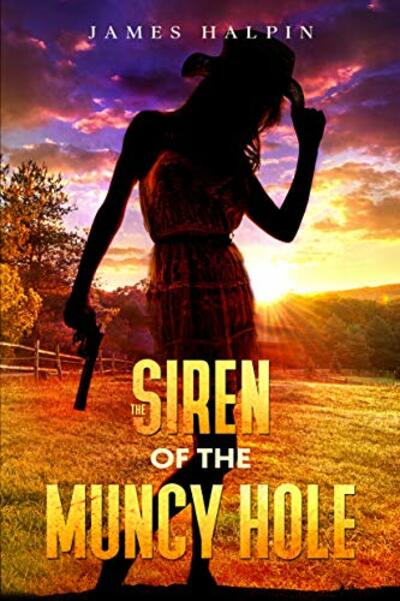 The main theme of this book appears to be, “How far will a mother go, to protect her daughter?” Based on what we read here, the answer to that question appears to be, “Very, very far.” The heroine is Sherica Daniels, who initially appears to have somewhat lucked out and escaped a nasty and abusive relationship. Her husband, drug addict Roy, has just died following a pair of botched armed robberies. That should leave her and teenage daughter Ashlynn to get on with their lives. Not so fast. For it’s only a short while before Roy’s drug dealer, Tokie, shows up. He’s demanding Sherica pays her husband’s debt – and more, because he believes she knows where the unrecovered loot from Roy’s robberies was hidden. When she fails to convince Tokie otherwise, he abducts Ashlynn.
The main theme of this book appears to be, “How far will a mother go, to protect her daughter?” Based on what we read here, the answer to that question appears to be, “Very, very far.” The heroine is Sherica Daniels, who initially appears to have somewhat lucked out and escaped a nasty and abusive relationship. Her husband, drug addict Roy, has just died following a pair of botched armed robberies. That should leave her and teenage daughter Ashlynn to get on with their lives. Not so fast. For it’s only a short while before Roy’s drug dealer, Tokie, shows up. He’s demanding Sherica pays her husband’s debt – and more, because he believes she knows where the unrecovered loot from Roy’s robberies was hidden. When she fails to convince Tokie otherwise, he abducts Ashlynn.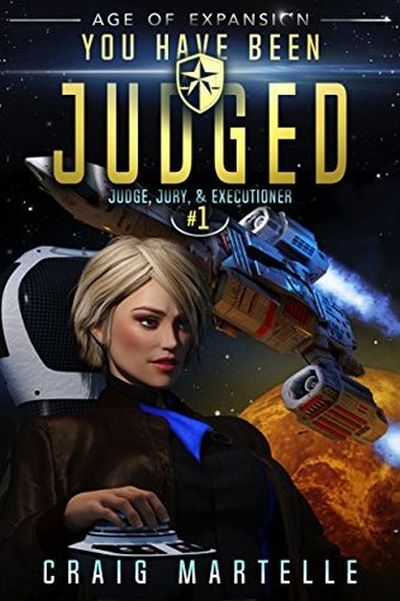 This is another entry in the sprawling Kurtherian Gambit universe, which must have well over a hundred books in it, by a slew of different authors. I’m gradually coming to a couple of conclusions: a) it’s a very loosely-tied series, and b) the quality varies. When you give your book a title like this, evoking the spirit of Judge Dredd, you are setting certain expectations. Unfortunately, this is a book which fails to meet them, with a heroine who never achieves the level of intensity necessary to live up to the series title: Judge, Jury, Executioner. It has reached 16 volumes, which suggests either there’s a market for it, or the author has too much time on their hands. No prizes for guessing my opinion.
This is another entry in the sprawling Kurtherian Gambit universe, which must have well over a hundred books in it, by a slew of different authors. I’m gradually coming to a couple of conclusions: a) it’s a very loosely-tied series, and b) the quality varies. When you give your book a title like this, evoking the spirit of Judge Dredd, you are setting certain expectations. Unfortunately, this is a book which fails to meet them, with a heroine who never achieves the level of intensity necessary to live up to the series title: Judge, Jury, Executioner. It has reached 16 volumes, which suggests either there’s a market for it, or the author has too much time on their hands. No prizes for guessing my opinion.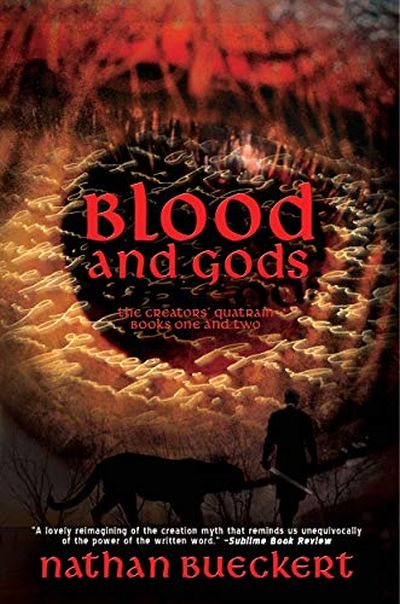 What I’ll remember about this one is the arc. Not so much of any character, more as to whether or not this would qualify for the site. The story began on solid enough ground, but around the end of the first volume (this omnibus contains parts 1+2), it plummeted well below the threshold needed. I almost gave up reading at that point, but persisted, and the book did rebound with an extended, gory finale in which the heroine and her ally took on what felt like an entire city. Okay, it’s back in. But I’m not happy about it, for reasons I’ll get to in a bit.
What I’ll remember about this one is the arc. Not so much of any character, more as to whether or not this would qualify for the site. The story began on solid enough ground, but around the end of the first volume (this omnibus contains parts 1+2), it plummeted well below the threshold needed. I almost gave up reading at that point, but persisted, and the book did rebound with an extended, gory finale in which the heroine and her ally took on what felt like an entire city. Okay, it’s back in. But I’m not happy about it, for reasons I’ll get to in a bit.